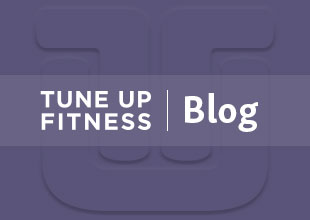
A new client of mine is a land surveyor who spends the majority of his time walking properties or standing in town hall vaults researching historical land records. He came to me complaining of difficulty walking up hills and debilitating back pain while standing. In fact, he had curtailed his walking significantly and often had to lie down in record vaults because his back hurt so much. He was taking 6 Aleve a day when I first saw him.
We tried Leg Stretch #1 but his knee wouldn’t straighten. I immediately thought “tight hamstrings,” but the gastrocnemius, the prominent calf muscle, will limit knee extension when it’s tight. Indeed, when I palpated above and below the back of his knee, his calves were crankier than his hamstrings. But there was more to the story (is there ever not more to the story?). Not only were his calves (plantarflexors) tight, but the opposing muscle—his tibialis anterior, which lifts the toes (dorsiflexes the ankle) was weak and restricted. All three of these muscles are incredibly important for walking hills due to the massive dorsiflexion required to step up an incline and strong plantar flexion required on the push off.
I gave him Sitting Seza for homework. He complained vociferously, but in just a few weeks, he was off the Aleve, on the hills, and off the vault floors.
See the attached Yoga Tune Up® video (Sitting Seza) for this great lower leg stretch. It’s also on the 5 Minute Quick Fix for Feet and Ankles with other great lower leg work.
Here’s a great 30 minute class specifically for your feet and ankles.
Visit our MOVE BREATHE ROLL video library to explore multiple classes focused on the feet & legs.
Try our Walking Well program to help improve your gait.


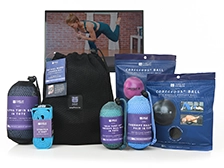
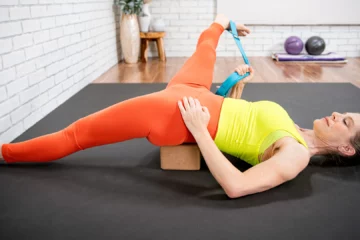

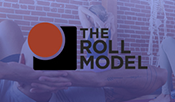
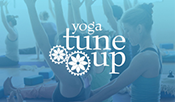


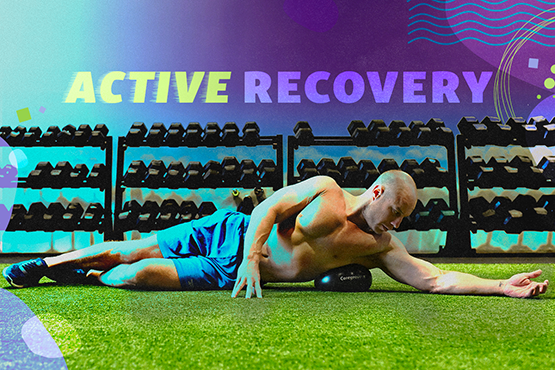
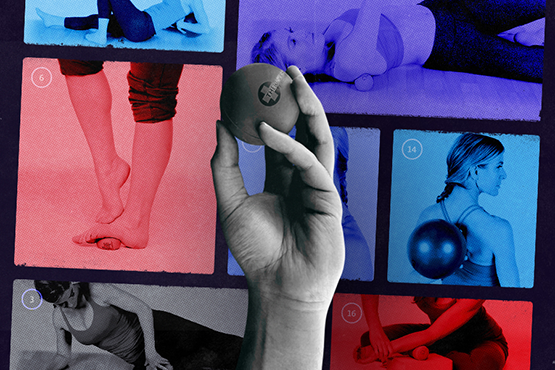
Amazing stretch for feet and ankles. I showed my mom and she said better than a steroid injection!
Thanks for letting us know, so glad to hear! There’s a number of great foot, ankle, leg classes in our MOVE BREATHE ROLL library. You can explore more here.
I have done these toe stretches many times but not with the strap – that was the TSN turning point for me – FOCUSING into the big toe and really took this stretch to the next level for me – my feet and ankles were so much happier and I will be sure to share this with my friends that work in high heel shoes too
I have been working on this personally and while its still intense, I can see it getting a little easier. To regress this pose I suppose one can eliminate the strap while keeping the legs as close as possible? Say for someone who is overweight or not too keen on using the strap around their ankles. I like that you used palpatation to evaluate his calves. I have found that sometimes people who have had chronically tight calves don’t even know it because they have never knew any other way!
I know I spend way too little time working on my feet and ankles. I tried the Sitting Seza, and it was excruciating at first… highlighting my lack of attention to this area. But it was a very noticeable improvement in mobility after just a few minutes of practice! Thanks for sharing!
Thank you for sharing your wisdom. This works great for a client of mine that does trail running who has similar woes.
Great hearing about how you highlighted his calves and plantar flexors as the criminals even though at first you assumed it was ‘tight hamstrings’, its so easy to just jump on the tight hamstrings band wagon – i will remember this for the future!
Before training I hadn’t done this with the strap around my ankles. So, in effect, I used to “cheat” by letting my ankles slide apart. There is definitely more…uhm…sensation now with the strap. I will teach it this was from now on (when straps are available. I wonder, though, whether students need to do warm up movements first or if they can go directly in to this stretch?
I use ofthen this pose when i teach to my group who work in a Bank. This pose is very hard for all this women. There toes are so Locked. I begin with the ball therapit and after try to go far whit the steching toes and ankles.
Sitting Seza is so tough for me! I had no idea my big toe and ankles were so tight. Thank you for sharing. I’m glad your client was relieved of pain!
Today, day 4 of YTUTT, we did Sitting Seza with a Strap. During my usual home practice I do this pose often, but rarely use a strap. I really like the intensitity that the strap adds to the posture and it really facilitates a mighty stretch in the the muscles that dorsi and plantar flex the feet. It is really truly amazing how interconnected all the muscles and bones and connective tissue all synchronized and when feet and calves are restricted and comprised that pain had manifested in the low spine. Great detective work – we all need to take a discerning look at body-clues and do a bit of our own experimentation. Thanks for this piece?
This is one of my favorite poses and I find my feet craving it after standing or walking all day. I’ve never done the YTU version of it with a strap and it makes so much sense because my ankles always want to drift. I find myself using muscular stabilization to prevent that and the bottoms of my feet continue to work instead of release. I love the update of this and will weave it into my repertoire. Thanks for sharing the story too about walking up hills and considering the calves. It’s true, we never look distal but many times its that simple.
great article, thank you!
Love the video share. I do this with some of my clients and add Jills “toe on the go” with the therapy balls…HUGE changes!
i love sitting this pose! i find it’s the best way to wake up my feet, especially after wearing boots or thick soled shoes. the belt is a nice touch to keep ankles close. Thanks
WOW !!
I do a lot of running and I have suffered of plantar fasciitis last year. I regularly did this exercise and it helped me a lot, but I had not have realized how this could have an impact on the extensor and flexor muscles of the foot and toes !! Do you believe that this exercise can also help in the prevention and healing of periostitis ??
Thank you very much for this blog !
Walking hills! I never thought about that but its a huge issue if people have bad arches!
We did this pose during class and it brings up so many cranky sentiments..about my feet of course. If this had been a regular practice of mine at a younger age, I may have been only slightly less cranky in the pose now, but years of non-care takes time to change. As a result, I think it is a great thing to introduce at a younger age and will definitely bring this into my house 🙂 Thank you for the great direction
We did this pose in class the other day. It is one of my least favorite poses and I am prone to avoid it. But understanding all the benefits that it has really helps to develop the patience for it. I love to hike and I will definitely being breathing through this before I hit those hilly trails. Thanks for the incentive to keep practicing.
sitting seza with a ball pinched between hamstrings and gastroc is a also a good one. initially just pressure in 3 different areas along the length of the muscle, adjusting the pressure but sitting down more firmly or lifting up. Then you can crossfire. Painful, but the good kind of pain !
Interesting post! We did this pose in class yesterday and I thought that my toes were going to break off. I quickly realized that I need to care for my feet better and that by doing so I will probably resolve other issues with my hamstrings and hopefully improve my squat. We ask so much of our feet every day we need to give a little back!
I’ve been doing this stretch for while after a long run to prevent tension on the sole of my feet and help release tibialis anterior Pain. I love adding the strap to the pose it really supports the internal rotation of the hips, it’s a great plus to a wonderful pose.
Very interesting how you found that the issue was more than just tight hamstrings. We often don’t even think about what the lower leg, ankles, and feet are doing when we are extending the knee. This is such a useful pose to being full range of motion into the ankles and feet, considering how restricted they are inside of shoes.
Am I one of the minority who love this exercise and can just luxuriate in it? Maybe it’s because I’ve never worn high heels and I am constantly barefoot but I don’t find the stretch agonizing at all. I wondered if I was doing it incorrectly but it just feels damn good to focus on neglected parts of my body. The feet especially, when we think about root chakra and grounding, it’s hard to get grounded if you neglect your feet. Simple sometimes but not easily executed. Thank you for this!
It’s amazing how a portion of the body so far away from the other would have such affect on it. I love this stretch after your feet have been enclosed in shoes for hours in a day, especially if they’re heels! I’m not a bit fan of the strap since my ankles are rather bony but some people struggle with keeping the ankles from inversion. It was a great story, must be so fulfilling to relieve someone of years of pain and medication! Thanks for sharing 🙂
I was introduced to Sitting Seza with a strap today. What an awaking I received. The strap made me ‘not cheat” and I felt every minute of it. This is something we all need…we may not like it, but we need it.
We just learned this exercise a few days ago. I must say, it was quite unpleasant, but that probably just means I really need it. Glad to hear you ere able to create relief for your hobbling client.
That’s an amazing story about your client. I personally have a love/hate relationship with this pose. I love it because I know it is good for me. I hate it because I have such limited toe extension and it is quite painful. So I always have to displace my weight off of my heels and lean forward with my hands on the ground. This is a great one for keeping all the little muscles around the toes long – they tend to get so short and atrophy from our poor shoe-wearing habits!
This is where the love-hate relationship with YTU begins 🙂 It’s the ultimate in the broken toes pose but miraculously the toes don’t break off and they (and the rest of your foot, leg, and entire lower body) actually thank you afterwards. I love the way the straps suppor the internal rotation of the hips and supports the adduction of the heels and not to mention the painfully good intensity of the whole posture with the straps.
Excellent article with suggestions! I just started working with a client that has a host of prior knee issues, will take a closer look at his gastroc and tibilias anterior next time and tote along some therapy balls along with my favorite seated position – Sitting Seza! I’m sure he will protest as everyone usually does with this pose, but hopefully his body will find gratitude in the long run.
Me left foot loves this pose but my right hates it due to a martial arts injury. Strapping the ankles for the first time recently gives my right foot and ankle the support it needs to endure the agony! I love how you connected the dots and tied this in to the bigger picture!
p.s. re: ROM in toes…does anyone have insight into pinky metatarsals…my right pinky toes has no ability to flex…and I cannot find a way in.
Any suggestions greatly appreciated!
WOW! A huge light bulb went on for me about tightness in gastrox! Thank you! I love this pose and am going to try to strap it today! yum!
This is such an amazing dynamic pose! I tried it today for the first time but- was concerned for one of my ankles which has somewhat limited ROM. The use of the strap seemed to make all the difference.. It allowed me to move through a surprising range and I tolerated much more than I expected. This will definitely be added to my toolbox for improving range of motion. Thanks for posting!
This is so important, thanks for sharing this. We pay little attention or not at all to our feet, and we need,( must, ) bring movement and stretch to this muscles in order no to get problems like plantar fascitis, or hammer toe, which is soo painful. This is a great amazing and exersice.
Christine thanks for sharing this story! Apart from the fact that the Sitting Seza is a great exercise, I also find a lesson to learn in your assessment to finding what was the root of your client’s problem. Looking at the body as whole (as in fact is) and not just at the location of where pain occurs, is key. As you explain, the pain in the lower back was originating from this man’s feet.
During Level 1 teacher training I learned that when we avoid to practice some poses, there is a red flag telling us where our weaknesses are nesting. Sitting Seza is one of my weaknesess that I am working on it. Reading this article motivated me to take it more seriously. Thanks for sharing!
Thanks for this! I live in the Bahamas and aside from a beach walk, 99.9% of my transportation is done in my station wagon! Sometimes I find myself in New York City, and all of a sudden, in an afternoon, I’ve suddenly walked for miles! I can always feel sudden behavior change in my anterior lower legs, like shin splints. Virasana, Supta Virasana, and Seza Position totally do the trick. Thanks for the description of your clients problem and results!
Liz, only doctor can really answer that question, but if it were me, I’d work on increasing my length of time in the hold, using breath as a guide. As long as you can breathe fully in the pose, stay with it and give your tissues to time adapt back to their “new old normal.” when your breathing shortens, tightens or gets shallow, come out.
It’s very comfortable for me to sit in Seza with my feet in plantar flexion, but it’s extremely uncomfortable for me to sit on my heels with my feet dorsiflexed. I broke my left foot and severely sprained ligaments in my toes a few years ago in martial arts and now find this pose very painful and am only able to hold it for a few breaths before the sensation gets too intense. Would you recommend continuing to practice it and simply breathing through the discomfort, gradually increasing the length holding the pose or does the old injury make it a pose I should avoid? Thanks for the help!
Thanks for reminding me about this pose! I love this stretch. I never feel too much with the toes flexed, but extended… ahhhhh.. love that shin stretch! I am surprised how many students hate this stretch and can’t put any weight on their feet. .. just reminding them that they could lean forward to take some weight off is a great tip from Jill. 🙂 btw – thank you Nathania for the word of caution about the searing pain in the ball of the foot… and the block btw the ankles. Great tip! how the heck do you know so much? lol.
I love this stretch and have been doing it for many years, both with the toes extended and flexed, but I had never done it with a belt until Maura Barclay showed us this version in our YTU teacher training. I was surprised at the added stretch I felt with the belt keeping my ankles and feet firmly adducted. Apparently I’ve been cheating a little bit by slightly abducting my ankles. With the belt tight I feel an alarming sensation on the plantar surface of my foot at the distal ends of my 1st metatarsals (where bunions are prone to appear) when the toes are in extension, telling me I have some more work to do here maybe stretching the flexor hallucis brevis. I also feel much tighter on the medial sides of my lower legs and ankles when the feet are in flexion, and I am beginning to suspect that my muscles of inversion are tight, and the antagonists (muscles of eversion) need some strengthening. “As below, so above” is so true! I have one question though. What do you do if your client can not get their toes to extend very far? I have seen many people whose toes seem to just point straight down, with no forward movement towards the knee, and the little toes in particular often still want to flex away from the stretch. Is there some adaptation they could do? Perhaps elevate their knees onto a block or something? Thanks.
love it! And love this pose. I often include it in classes, much to the dismay of some students, however I feel that the benefit is so great–always makes my feet feel awesome!
What a great story and accompanying video! After running for years, I started yoga and the first time i sat in seza tucking the toes under i thought i would run right out of the room. Over time however, this pose has become one of my favorites. My feet really crave this deep dorsiflexion. I like to sneak this pose in my classes because it’s helped me so much
A word of caution, if you feel a sharp or searing pain in the ball of the foot when sitting seza, get your feet seen by a podiatrist. In a small percentage of the population, the sesamoid bone that is responsible for the spring in your step is split and may put pressure on the nerve plexus there. Sitting on a block placed between the ankles can help you gain the benefits of the pose without quite so much pressure on the ball of the foot.
success! thanks for including the video!
This is such a painful position for me without the strap – that I am excited (and not excited) to try this with it. It’s funny how the poses that tend to ease the most pain or discomfort, sometimes bring that up so that we can work through it. Curious if this will help those charlie horses that sometimes pop up in certain poses like warrior two or child’s pose. Thoughts?
I shared these exercises with my sister who is a college athlete. When the poor girl isn’t walking around campus to get to and from classes, she is spending majority of her time running, weight lifting, practicing, compteing on the lacrosse field.. or, of course, rehabbing in the training room. I showed her this simple exercise to help her relieve the cramping and fatigue in her feet and she was blown away at the effects these had on her feet. Thanks!
Thanks Christine! I found your advice very helpful, I know a lot of people that spend majority of their day, standing. The sitting seza video helped me out because now I know how to advise people in these circumstances. I did not realize how important your calves (plantarflexors), tibialis anterior and hamstrings are especially when it comes to walking hills due to the dorsiflexion required to step up on inclines and the strong plantarflexion required to push off.
I love this pose!! I can’t believe I am saying that, as it really used to bother me to tuck my toes under like this due to an old stress fracture that always nagged me. After that eventually healed I sprained my ankle, so again – this pose was a problem. Yet, just the other day in YTU training we did this pose, and I was astonished to see that I could do it. I’m not saying it was easy or painless, but I stuck with it and I feel AMAZING benefits from it. When I woke up and put my feet on the ground the next morning, they felt more relaxed and pain-free than they had in years. Needless to say, this is a pose that is going to be a part of my self practice all the time!
Thanks for connecting that this pose also helps to loosen up the calves. This pose is pretty difficult for me but after practicing it for two days in a row, I can feel sensations in my feet. Good ones. Thanks
Again, muscles as teammates make it tough to clearly identify the trouble-maker. When performing muscle length tests for the hamstrings, we have the client actually plantar-flex the foot of the leg we test in the supine hamstring length assessment. It is one way to get a little more specific result.
I know that’s difficult when using a strap, but it might help if you have suspicions.
I use this pose all the time for a client with intense tightness in the feet, and didn’t realize how much it was truly affecting the rest of their body as well. I’ll be using this much more often with clients. Thanks for sharing.
I have also found it helps me tremendously when I develop shin splints (which used to happen all the time during my days of triathlon – days full of tight calves & a weak tibialis anterior!
The video really helps. It’s nice to learn ways to assist both my self and others in managing pain in the body, even basic pain from overly exerting certain muscles. I will indeed make use of plantar flexion in this way when I encounter clients with problems like the one described above.
Wow, this story is really amazing. It shows that there very often is a way around using medication to ease pain. Instead, we should really listen to what our body is trying to tell us and work with it. A basic knowledge of anatomy clearly helps. I really like the video and will definitely regularly do the exercise.
This video is great! I walk up and down stairs all day and have developed pain in my foot. These stretches help! Thank you!
This video was really good because it helped me to stretch my feet since I spend a lot of time walking up and down stairs all day and I began to develop a pain in my right foot. Thank you!